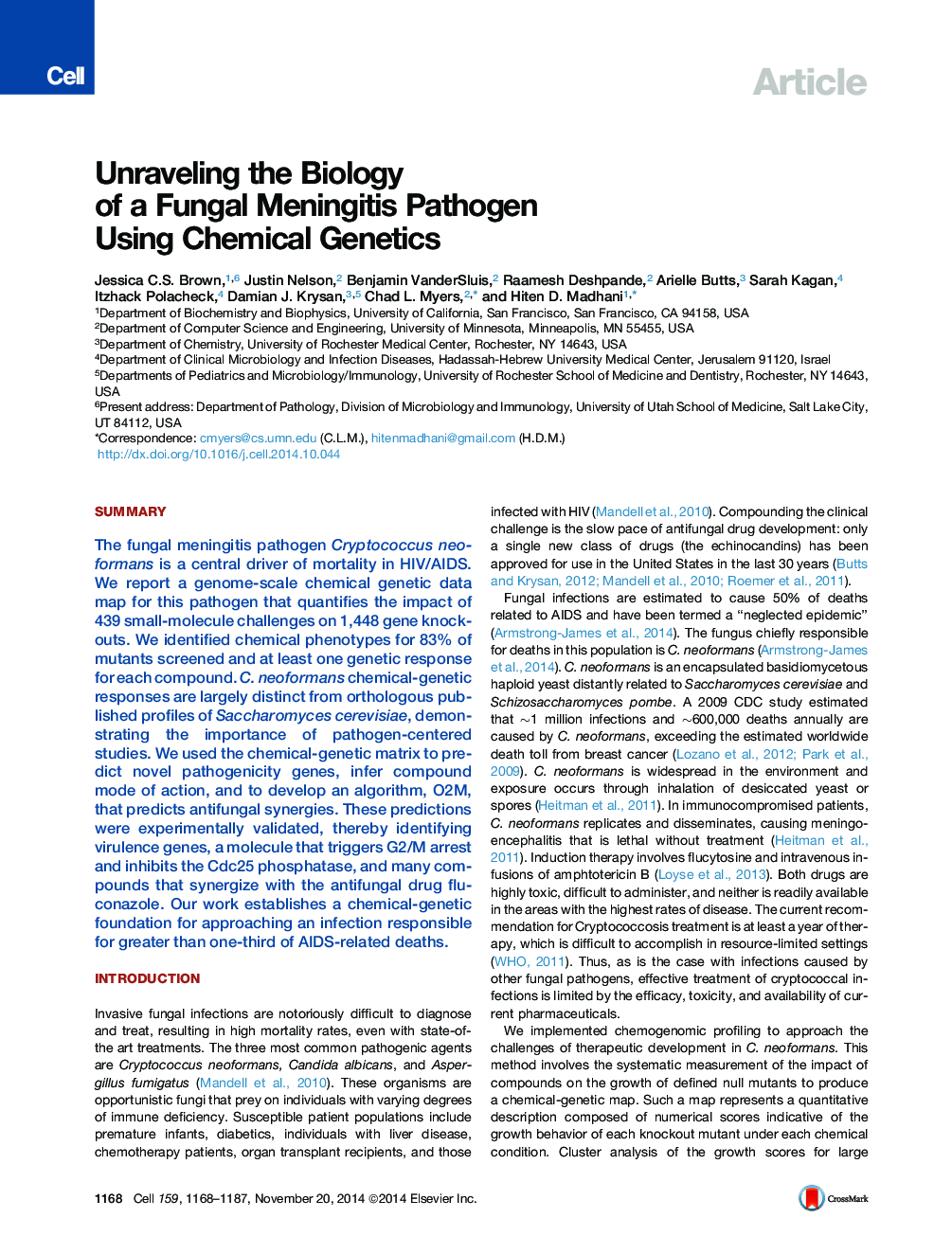| Article ID | Journal | Published Year | Pages | File Type |
|---|---|---|---|---|
| 2035380 | Cell | 2014 | 20 Pages |
•Large-scale chemical-genetic map of the fungal pathogen C. neoformans is described•Correlation analysis is used to identify numerous virulence factor mutants•Signatures are used to identity the cell cycle as the target of a small molecule•Powerful new method to predict compound synergies, O2M, is reported
SummaryThe fungal meningitis pathogen Cryptococcus neoformans is a central driver of mortality in HIV/AIDS. We report a genome-scale chemical genetic data map for this pathogen that quantifies the impact of 439 small-molecule challenges on 1,448 gene knockouts. We identified chemical phenotypes for 83% of mutants screened and at least one genetic response for each compound. C. neoformans chemical-genetic responses are largely distinct from orthologous published profiles of Saccharomyces cerevisiae, demonstrating the importance of pathogen-centered studies. We used the chemical-genetic matrix to predict novel pathogenicity genes, infer compound mode of action, and to develop an algorithm, O2M, that predicts antifungal synergies. These predictions were experimentally validated, thereby identifying virulence genes, a molecule that triggers G2/M arrest and inhibits the Cdc25 phosphatase, and many compounds that synergize with the antifungal drug fluconazole. Our work establishes a chemical-genetic foundation for approaching an infection responsible for greater than one-third of AIDS-related deaths.PaperClip To listen to this audio, enable JavaScript on your browser. However, you can download and play the audio by clicking on the icon belowHelp with MP3 filesOptionsDownload audio (2698 K)
Graphical AbstractFigure optionsDownload full-size imageDownload high-quality image (1022 K)Download as PowerPoint slide
